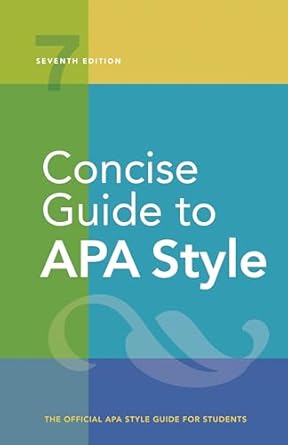[toc]
measurement abbreviations a quick scientific guide
Concise Guide to APA Style: 7th Edition (OFFICIAL)
Page 139 Review
Understanding Measurement Abbreviations in Scientific Writing
In scientific and technical writing, clarity and conciseness are paramount.
The appropriate use of abbreviations contributes significantly to achieving these goals.
This commentary focuses on the common abbreviations provided in the excerpt and their implications for effective communication.
Abbreviations for Time
The excerpt begins by outlining abbreviations for units of time, including hour (hr), minute (min), second (s), millisecond (ms), and nanosecond (ns).
These abbreviations are universally understood in scientific contexts.
For example, the excerpt states:
“hour hr 6 hr”
“minute = min | 30 min”
“second s {5s”
“millisecond ms | 2.65 ms”
“nanosecond ns | 90ns”
The standardized use of these abbreviations prevents ambiguity and ensures that readers can quickly grasp the time scale being discussed.
Using ‘hr’ instead of ‘hours’, for instance, saves space and enhances readability.
Abbreviations for Units of Measurement
The majority of the excerpt lists abbreviations for various units of measurement.
These are categorized alphabetically, making it easy for the reader to find a specific abbreviation.
Some notable examples include:
“AC alternating current”
“°C degrees Celsius”
“cm centimeter”
“dB decibel (specify scale)”
“DC direct current”
“F farad”
“g gram”
“Hz hertz”
“J joules”
“kg kilogram”
“km kilometer”
“L liter”
“m meter”
“mg milligram”
“mL milliliter”
“mol mole”
“N newton”
“Pa pascal”
“V volt”
“W watt”
Each abbreviation corresponds to a specific unit, and their consistent use across scientific literature helps maintain uniformity.
Importance of Context and Metric Equivalents
The excerpt contains an important note:
“Note.
These abbreviations do not need to be defined when they are used in a paper.”
This highlights that these abbreviations are generally recognized within the scientific community, eliminating the need for redundant definitions.
However, the note also emphasizes:
“Include the metric unit equivalent in parentheses when using nonmetric units.”
This is crucial for ensuring clarity and preventing confusion, particularly when communicating with a global audience or when dealing with older texts that might use non-metric units more frequently.
For example, when referring to ‘inch’, the metric equivalent ‘cm’ should be included.
Specific Examples and Their Implications
The table provides a diverse set of abbreviations, each with its specific application.
Consider the following examples:
“rpm revolutions per minute”
This is commonly used in engineering and physics to describe rotational speed.
“ppm parts per million”
This is used in chemistry and environmental science to express very low concentrations of substances.
“psi pounds per square inch”
This is frequently used in engineering to measure pressure.
“mol wt molecular weight”
Essential in chemistry for calculating molar masses.
Understanding the context in which each abbreviation is used is essential for accurate interpretation of scientific data.
Potential Pitfalls and Best Practices
While abbreviations are useful, it’s essential to avoid ambiguity.
Some abbreviations can have multiple meanings depending on the field.
For example, ‘cc’ can refer to ‘cubic centimeter,’ but in other contexts, it might have different meanings.
Always ensure the context clarifies the intended meaning.
Conclusion
The use of standardized abbreviations for units of measurement is a cornerstone of scientific communication.
This excerpt provides a valuable reference for common abbreviations, promoting clarity and conciseness in technical writing.
By adhering to these standards and considering the context in which abbreviations are used, scientists and engineers can effectively convey complex information to a broad audience.
The consistent use of these abbreviations promotes clarity and reduces the risk of misinterpretation, which is crucial in scientific and technical fields.
Buy full ebook for only $18: https://www.lulu.com/shop/american-psychological-association/concise-guide-to-apa-style-7th-edition-official/ebook/product-rmzpq54.html?page=1&pageSize=4
Measurement Abbreviations A Quick Scientific Guide
Read more: Understanding Plagiarism: Definition, Avoidance, and Ethics


Leave a Reply